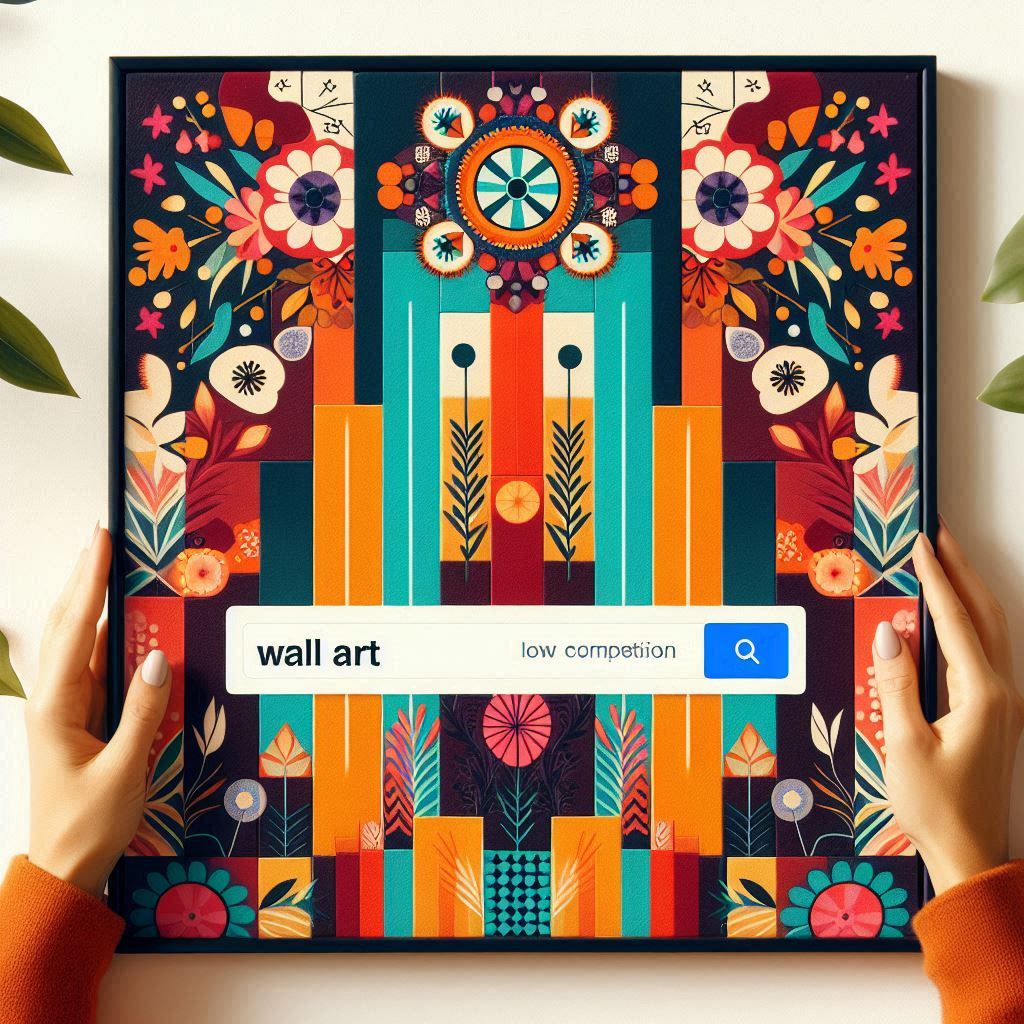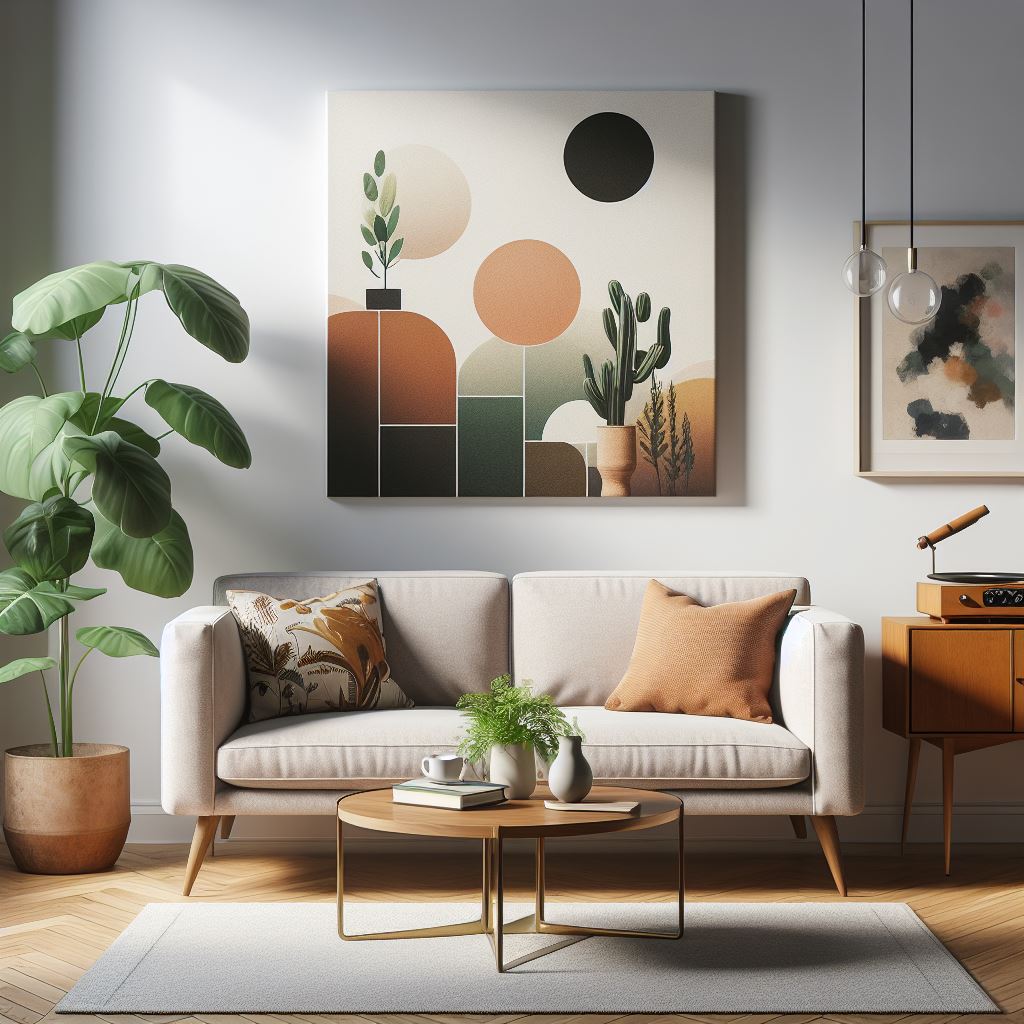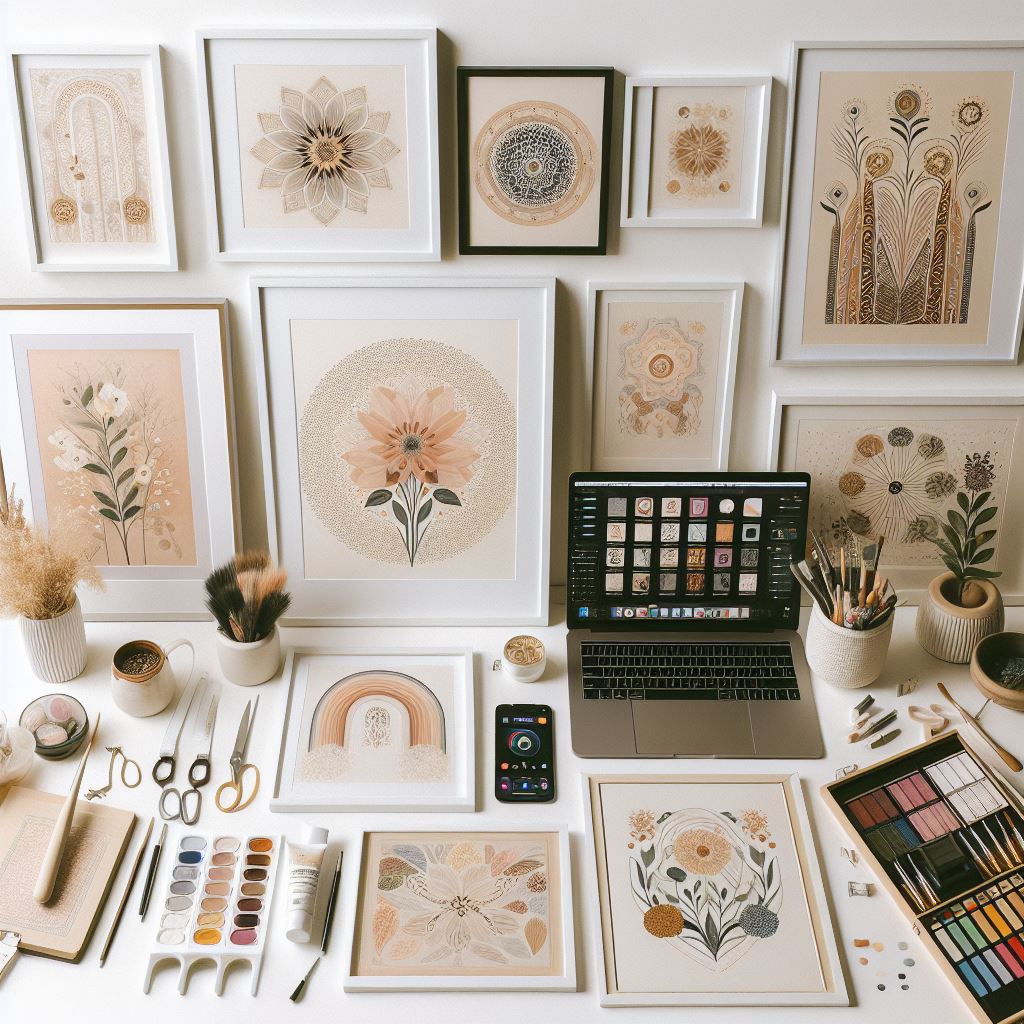Wall art has a unique power to transform spaces, adding personality, style, and a touch of soul to our homes and offices. In today’s world, where self-expression and individuality are celebrated, the desire for unique and personalized wall art pieces is stronger than ever. But what if you’re not an artist or lack the resources for traditional art printing and inventory management? This is where the magic of print on demand (POD) comes in.
Print on demand allows you to create and sell stunning wall art without the hassle of managing inventory or upfront costs. It’s a game-changer for aspiring entrepreneurs and art enthusiasts, offering a low barrier to entry and the flexibility to experiment with diverse designs and products. If you’ve ever dreamed of sharing your artistic vision or curating a collection of captivating wall art, then this beginner’s guide is for you.
Finding Your Niche and Inspiration:
The first step in your POD wall art journey is identifying your niche. Instead of catering to a broad audience, focusing on a specific style or theme helps you target a defined customer base and stand out in the crowded marketplace. Fortunately, tools like Erank and EtsyHunt can be your best friends in this research process. These platforms allow you to explore popular niches, analyze competitor success, and identify keywords with high search volume and low competition.

Trending wall art styles to consider include Japandi, minimalist, botanical, abstract, geometric, vintage, and inspirational quotes. Explore online marketplaces like Displate and browse art communities on social media platforms like Instagram and Pinterest to gather inspiration and identify what resonates with your own artistic taste.
Designing Your Wall Art:
Once you’ve chosen your niche, it’s time to bring your wall art visions to life. There are several paths you can take:
- Create your own art: If you have artistic skills, unleash your creativity through painting, illustration, photography, or digital art software.
- Use AI art generators: Explore the power of artificial intelligence with tools like Midjourney and Kittl. These platforms allow you to generate art using text prompts, specifying styles, colors, and keywords.

- Hire a freelance artist: If you prefer to outsource the design work, platforms like Upwork and Fiverr offer access to talented artists specializing in various styles.
When designing for print on demand, remember these key tips:
- Consider different product types and their dimensions: Wall art comes in various formats like posters, canvases, and framed prints. Design with these different dimensions in mind to ensure your art translates well across products.
- Ensure high-resolution images: Use high-quality images (ideally 300 DPI or higher) to achieve crisp and clear prints, especially for larger formats.
- Incorporate negative space: Leave enough space around your design elements, especially if you plan to offer framed prints. This allows for different frame styles without cropping your artwork.
Upscaling and Preparing Your Artwork:
Upscaling your artwork is crucial to maintain print quality across different sizes. AI image upscalers like Gigapixel AI and Vectorizer.ai can increase image resolution without sacrificing detail. Gigapixel AI excels at upscaling photographs and complex artwork, while Vectorizer.ai is perfect for flat illustrations and designs with solid colors.

Save your final designs in high-quality formats like JPEG or PNG, and be mindful of color profiles for accurate print reproduction.
Setting Up Your Print on Demand Business:
With your designs ready, it’s time to set up shop! Etsy is a popular platform for selling wall art due to its established marketplace, built-in audience of art enthusiasts, and user-friendly tools. Create an Etsy shop and connect it to a print-on-demand service like Printful.
Here’s how to create a product listing on Printful:
- Choose the product type and variants: Select the type of wall art you want to sell (e.g., posters, canvases) and choose the available size options.
- Upload and adjust design placement: Upload your design and ensure it’s positioned correctly for each size variant.
- Set prices and profit margins: Determine your pricing strategy, factoring in Printful’s printing costs and your desired profit margin.
- Select a fulfillment partner: Choose a printing partner based on their ratings, shipping costs, and production times.
Creating Stunning Mockups:
High-quality mockups are essential for showcasing your art in context and attracting customers. Placeit offers a vast library of mockups featuring diverse room types, frame styles, and sizes.

You can even create video mockups that bring your art to life and capture attention. Integrate these mockups into your Etsy listings to give potential buyers a clear vision of how your wall art will enhance their spaces.
Marketing and Promoting Your Wall Art:
To drive traffic and sales to your Etsy shop, employ a combination of marketing strategies:
- Etsy SEO optimization: Research and utilize relevant keywords in your titles, tags, and descriptions to improve your search ranking within Etsy.
- Social media marketing: Share captivating images and videos of your wall art on platforms like Pinterest and Instagram. Engage with your audience and build a community around your art style and niche.
- Paid advertising: Explore Etsy Ads and other advertising platforms to reach a wider audience and target specific demographics.
- Content marketing: Create blog posts, videos, or social media content related to your niche and art style. Share your artistic process, offer decorating tips, and provide value to your audience.
FAQs:
- Q: Is the printable wall art market saturated?
- A: The printable wall art market has areas of high competition, especially for generic designs. However, by targeting specific niches and focusing on unique, high-quality art, you can still find success. Research and identify underserved areas with high search volume and low competition to maximize your chances of standing out.
- Q: What type of art sells best on Etsy?
- A: Popular art styles on Etsy include minimalist, abstract, botanical, inspirational quotes, and vintage designs. Trends evolve, so research current best-sellers and explore different styles within your chosen niche.
- Q: Do I need to be a graphic designer to create wall art?
- A: No, you have various options. You can create your own art if you have the skills, utilize AI art generators like Midjourney and Kittl, or hire freelance artists for specific design needs.
- Q: How much does it cost to start a print-on-demand wall art business?
- A: Starting costs are minimal. Etsy charges $0.20 per listing, but you can get 40 free listings with a referral link. Printful is free to use; you only pay for products when a customer orders.
- Q: How do I market my wall art on Etsy?
- A: Optimize your Etsy listings with relevant keywords, utilize social media platforms, consider Etsy Ads, and create engaging content related to your niche and art style.
Conclusion:
Creating and selling stunning wall art with print on demand is an achievable and rewarding venture. By identifying a profitable niche, designing captivating artwork, utilizing AI tools, and implementing effective marketing strategies, you can turn your artistic passion into a thriving business. Remember, the key to success lies in offering unique, high-quality designs and creating a compelling brand that resonates with your target audience.
Take the Next Step: Are you ready to embark on your print-on-demand journey? Start by exploring the resources mentioned in this guide and unleash your creativity. Join our free Facebook group for more tips, inspiration, and support from a community of POD enthusiasts.
Start creating, start selling, and share the beauty of your art with the world through the power of print on demand!


